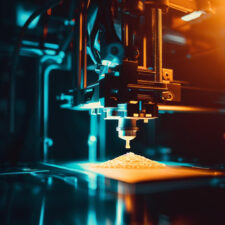3D printing is an important technology that has revolutionized the way products are designed and manufactured. Compared to traditional manufacturing methods, 3D printing offers a number of advantages, including lower costs, faster production times, and the ability to create complex geometries. However, not all 3D printing methods are created equal, and some produce higher quality results than others. In this article, we will explore some of the high-quality 3D printing methods available today.
Fused Deposition Modeling (FDM)
Fused Deposition Modeling (FDM) is one of the most popular 3D printing methods used today. It works by melting a thermoplastic filament and extruding it through a nozzle to build up the model layer by layer. FDM is known for its high accuracy, low cost, and ease of use. It is commonly used to create prototypes, functional parts, and even artwork.
FDM printers come in a variety of sizes and can use a range of materials, from basic PLA to high-performance materials like ABS and nylon. Additionally, FDM allows for the use of dissolvable support materials, which make it possible to print complex geometries with overhangs and internal cavities.
Stereolithography (SLA)
Stereolithography (SLA) is a 3D printing method that uses a process called photopolymerization to create objects. It works by exposing a liquid resin to a UV laser, which causes the resin to solidify and form a solid object. SLA is known for its high level of detail and accuracy, making it ideal for creating prototypes, models, and even dental and medical implants.
SLA printers are more expensive than FDM printers, but they offer higher resolution and more material options, including flexible and high-temperature resins. Additionally, SLA can produce parts with a smooth surface finish, which can reduce post-processing and improve the overall quality of the part.
Selective Laser Sintering (SLS)
Selective Laser Sintering (SLS) is a 3D printing method that uses a laser to sinter powdered materials, such as nylon or metal, into solid objects. SLS is known for its high strength, durability, and accuracy, making it ideal for creating functional parts, including those with complex geometries.
SLS printers are more expensive than FDM printers but offer more material options, including high-performance materials like carbon fiber reinforced nylon. Additionally, SLS can produce parts with a high level of detail and accuracy, making it ideal for creating functional prototypes and end-use parts.
Digital Light Processing (DLP)
Digital Light Processing (DLP) is a 3D printing method that uses a projector to cure a liquid resin. It works by projecting a pattern of light onto the resin, which causes it to solidify and form a solid object. DLP is known for its high speed and accuracy, making it ideal for creating small, detailed parts.
DLP printers are more expensive than FDM printers but offer higher resolution and more material options, including flexible and high-temperature resins. Additionally, DLP can produce parts with a smooth surface finish, which can reduce post-processing and improve the overall quality of the part.
Conclusion
In conclusion, 3D printing is a powerful technology that offers a range of benefits over traditional manufacturing methods. High-quality 3D printing methods, such as FDM, SLA, SLS, and DLP, offer even greater advantages, including higher accuracy, better resolution, and more material options. When considering 3D printing for your next project, it's important to choose the right method based on your specific needs and budget. With the right method and materials, 3D printing can help you create faster, better, and more innovative products.

